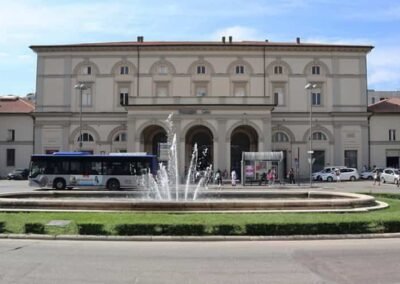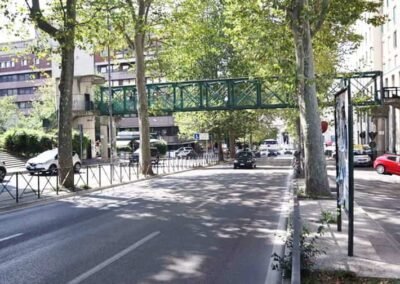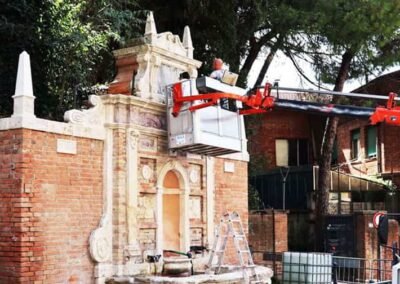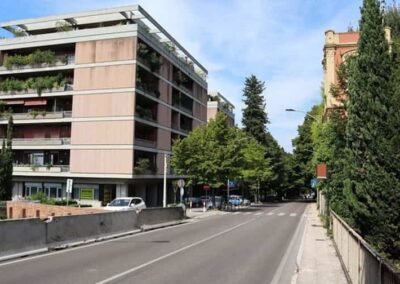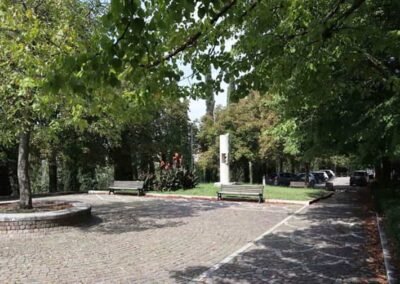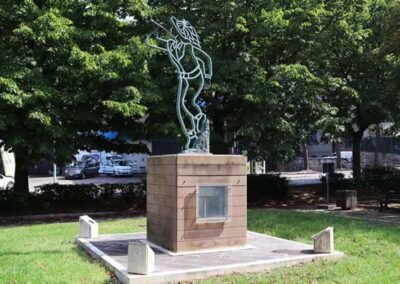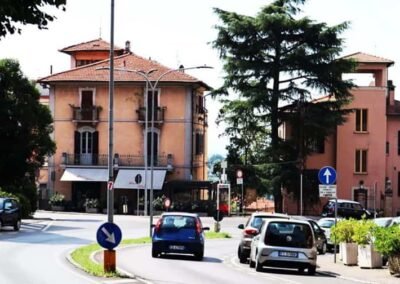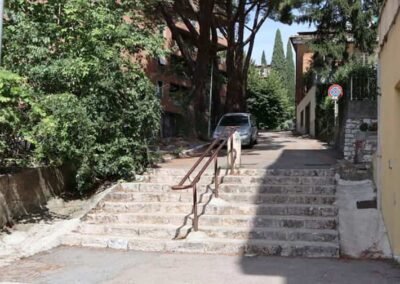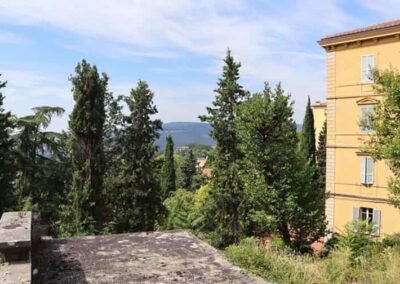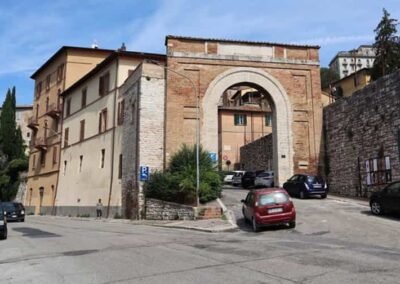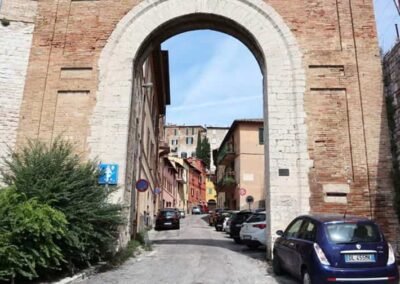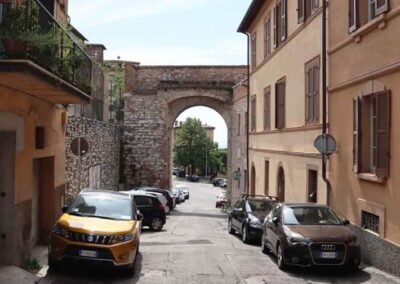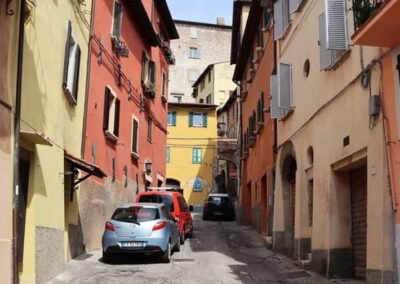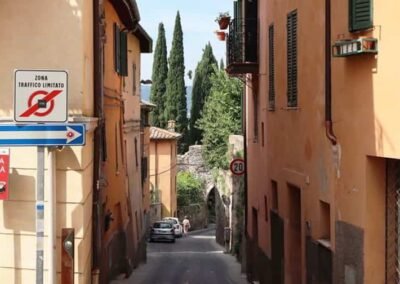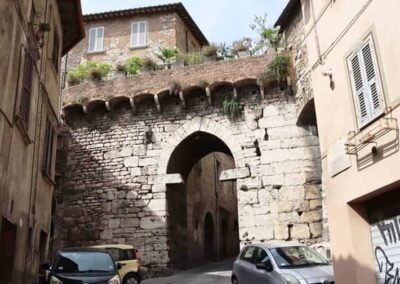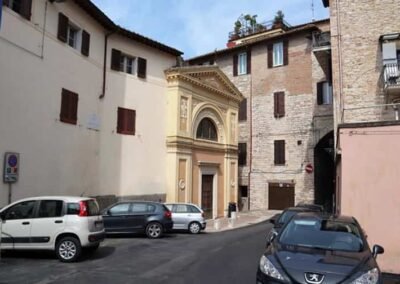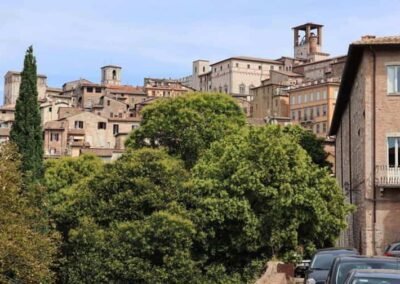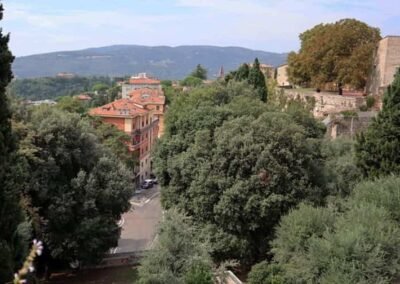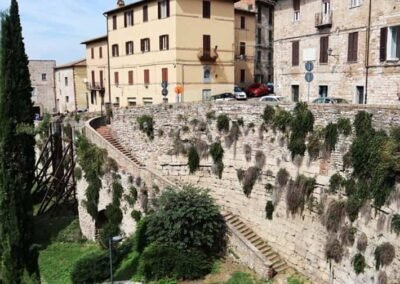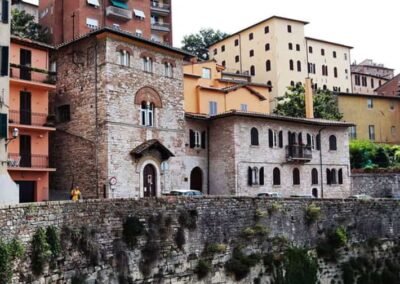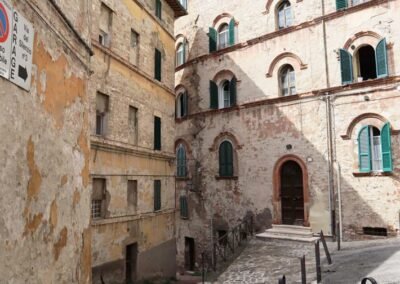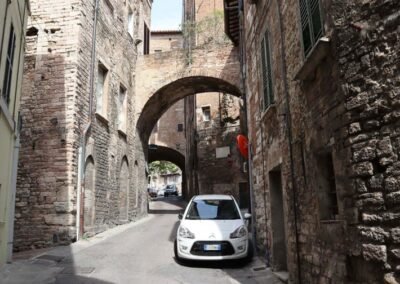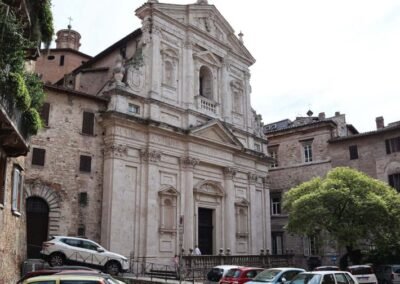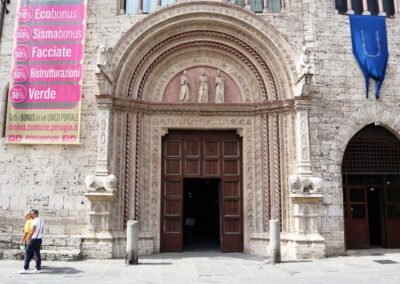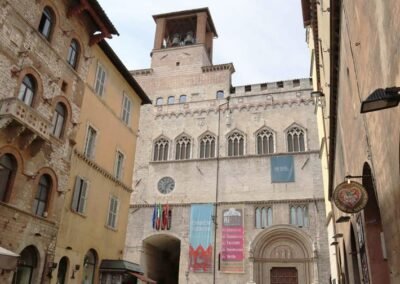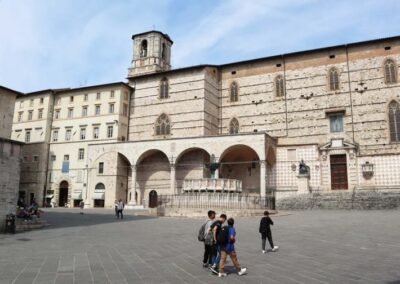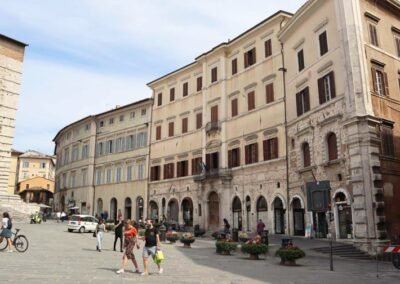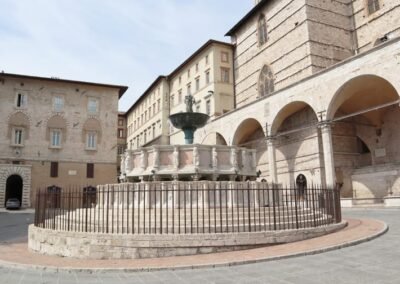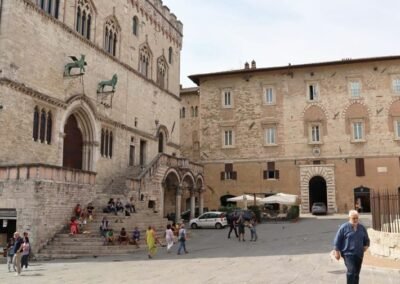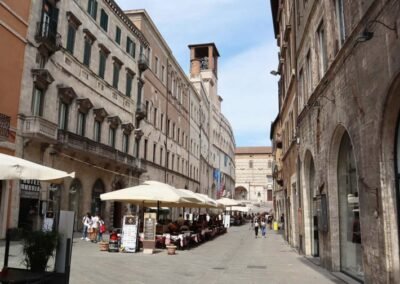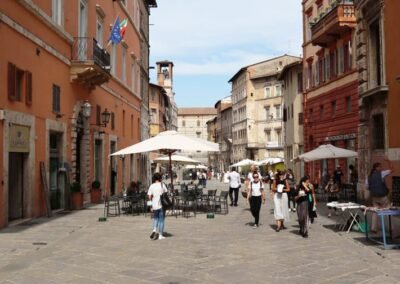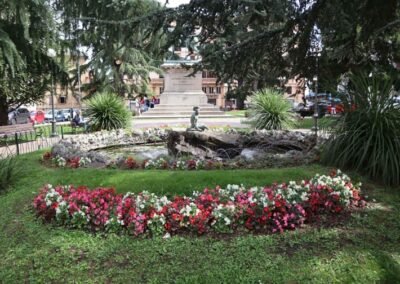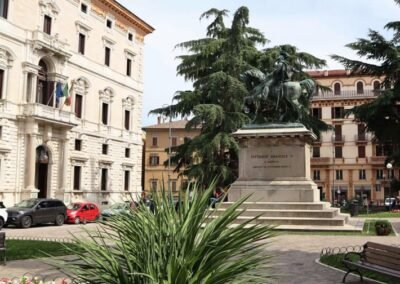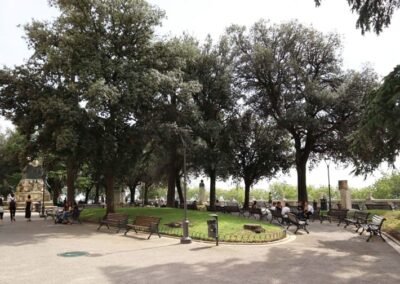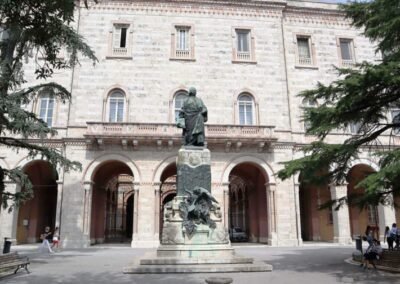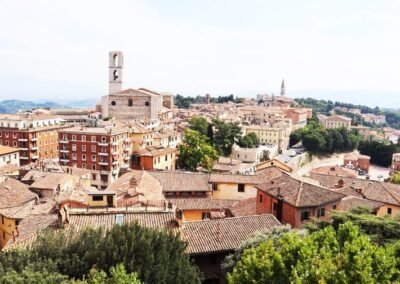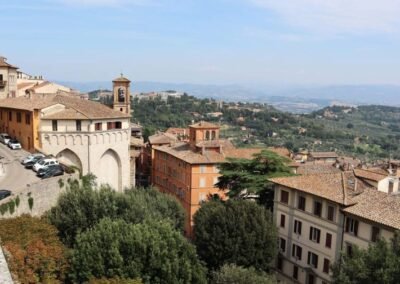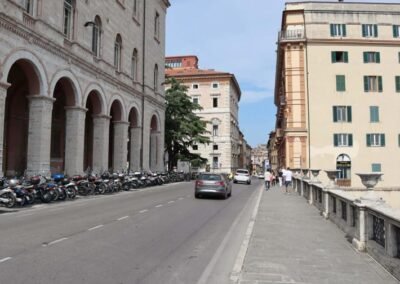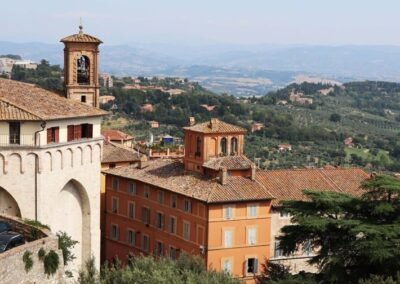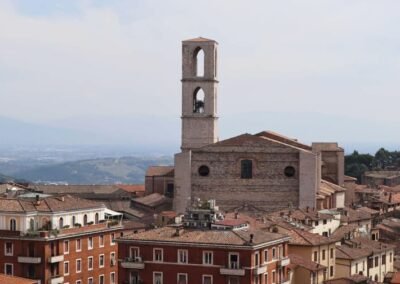HOME
THE REGIONS OF ITALY
PLACES IN ITALY
Italy in Photos
Via della Cupa, 06123 Perugia PG, Italy (September 2020)
Perugia
Perugia, the vibrant capital of Italy’s Umbria region, is a city steeped in history, culture, and charm. Situated in the heart of Italy, perched on a hilltop overlooking the Tiber River valley, Perugia offers a captivating blend of ancient heritage and contemporary vibrancy. With its medieval architecture, rich artistic traditions, and lively cultural scene, Perugia stands out as a gem of central Italy. The city’s history dates to Etruscan times, making it one of the oldest cities in Italy. Founded by the Etruscans around the 3rd century BC, Perugia flourished as a major centre of commerce and culture in ancient times. The city’s Etruscan heritage is still evident today, with remnants such as the ancient city walls and the well-preserved Etruscan Arch serving as poignant reminders of its storied past. During the medieval period, Perugia continued to thrive, becoming a prominent city-state. Its strategic location, atop a hill, provided both natural defence and control over the surrounding fertile lands. The mdei Priori and the stunning Gothic Cathedral of San Lorenzo. These architectural marvels are testament to Perugia’s importance as a political and cultural hub during the Middle Ages.
One of the most striking features of Perugia is its well-preserved medieval city centre, characterized by narrow, winding streets and charming piazzas. The city’s historical heart is a labyrinth of stone-paved streets and alleys that evoke a sense of timelessness. Among the most famous streets is Via dei Priori, a thoroughfare lined with historic buildings and shops. The Piazza IV Novembre, the main square, is particularly noteworthy. Here, visitors can admire the impressive Fontana Maggiore, a grand medieval fountain adorned with intricate carvings and sculptures. Perugia is also renowned for its rich artistic and cultural heritage. The city has long been a centre of learning and creativity, home to several notable artists and scholars. One of the most celebrated figures associated with Perugia is the painter Pietro Vannucci, also known as Perugino. A leading figure of the Italian Renaissance, Perugino’s works include several notable frescoes and altarpieces. His influence is still felt today, with his masterpieces displayed in various locations throughout the city. The University for Foreigners, established in 1921, adds to the city’s cultural vibrancy. It attracts students from around the world who come to Perugia to learn Italian and immerse themselves in Italian culture. This international presence contributes to the city’s cosmopolitan atmosphere, blending seamlessly with its historic charm.
Perugia is also famous for its vibrant cultural festivals, which celebrate everything from music and art to food and film. The Umbria Jazz Festival, held annually in July, is one of Europe’s most prestigious jazz events. It draws top international musicians and a diverse audience, transforming the city into a lively hub of music and performance. Another notable event is the Eurochocolate Festival, held every October, which celebrates the city’s long-standing tradition of chocolate-making. This festival attracts chocolate lovers from around the world to indulge in a wide variety of sweet treats. In addition to its cultural events, Perugia is known for its culinary delights. The local cuisine reflects Umbrian traditions, featuring hearty, flavourful dishes made from fresh, locally sourced ingredients. The city’s trattorias and restaurants offer a range of culinary experiences, from rustic fare such as wild boar and truffles to exquisite pastries and artisanal cheeses. The city’s landscape also enhances its appeal. Perugia is surrounded by picturesque countryside, with rolling hills and vineyards that contribute to the region’s reputation for fine wines. The nearby Lake Trasimeno offers opportunities for outdoor activities such as boating and hiking, adding to the city’s allure as a destination for nature lovers. Perugia is a city that beautifully marries its rich historical and cultural herit
Worth a Visit
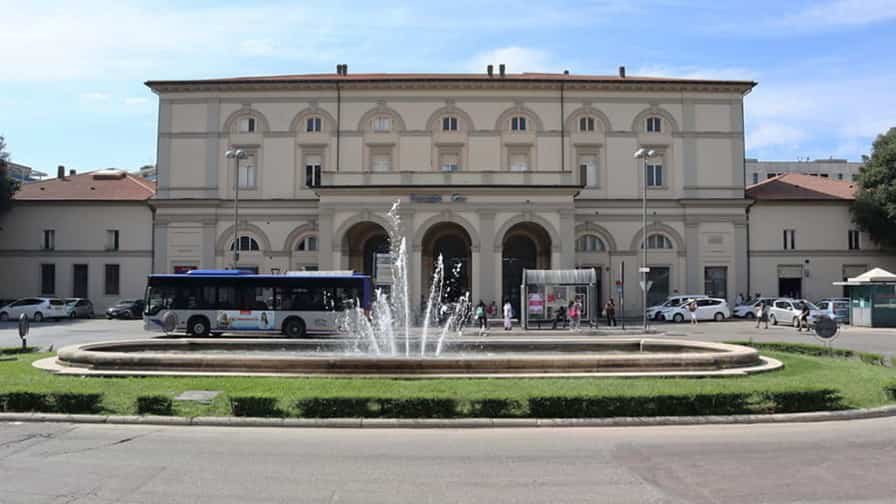
Piazza Vittorio Veneto in Perugia (postcode 06124, PG, Italy) is a welcoming square located just outside the historic city center, near the busy train station of Perugia Fontivegge. It serves as an important urban hub, where local life blends with the rhythms of travelers passing through the area. The square is surrounded by a mix of residential buildings, small shops, cafés, and services, making it a practical meeting point for both residents and visitors. Unlike Perugia’s medieval piazzas, Piazza Vittorio Veneto reflects a more modern character, shaped during the city’s 20th-century development. Its open space offers a sense of pause within a district marked by movement and accessibility. From here, one can easily reach other parts of Perugia, including the historic acropolis via the Minimetrò, as well as key transport links. The square stands as a lively gateway to the city, connecting daily life with travel and exploration.
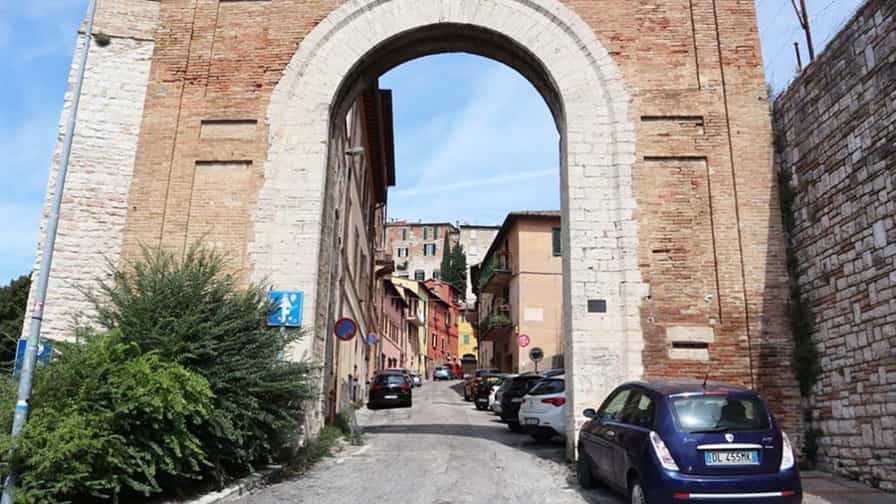
Porta Crucia, located along Via Eburnea in Perugia (06123, PG, Italy), is one of the city’s historic gates that once formed part of the medieval defensive walls. This ancient entryway reflects Perugia’s long history as a fortified hilltop city, where gates and walls played a crucial role in protecting its people and controlling access. The structure retains a distinctly medieval character, with stonework that recalls the city’s architectural heritage and its importance as a strategic centre in Umbria. Porta Crucia was not only a defensive passage but also a symbolic threshold, marking the transition between the bustling interior of Perugia and the surrounding countryside. Today, it stands as a quiet yet evocative reminder of the city’s layered past, often overlooked by visitors in favour of more famous landmarks. For those who explore it, Porta Crucia offers a glimpse into Perugia’s historic fabric, where ancient stones still tell timeless stories.
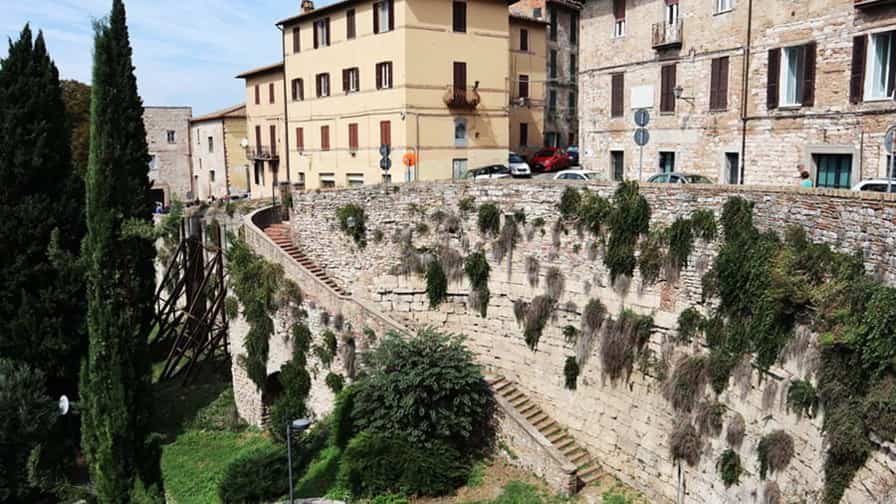
Via della Cupa, in the heart of Perugia’s historic centre (06123, PG, Italy), is a charming street that captures the city’s medieval atmosphere. Narrow and winding, it reflects the characteristic layout of Perugia’s hilltop core, where alleys, stairways, and arches create an intimate urban fabric. Walking along Via della Cupa, one can admire stone façades, hidden courtyards, and glimpses of the surrounding hills that appear unexpectedly between buildings. The street is part of a network of ancient routes that connected neighbourhoods within the city walls, often leading to important religious and civic landmarks. Today, it retains a residential feel, with a quiet charm that contrasts with the livelier piazzas nearby. Its atmosphere evokes centuries of local history, where daily life unfolded in close-knit communities. Via della Cupa offers visitors a chance to step back in time and experience Perugia’s authentic character beyond its more frequented monuments.
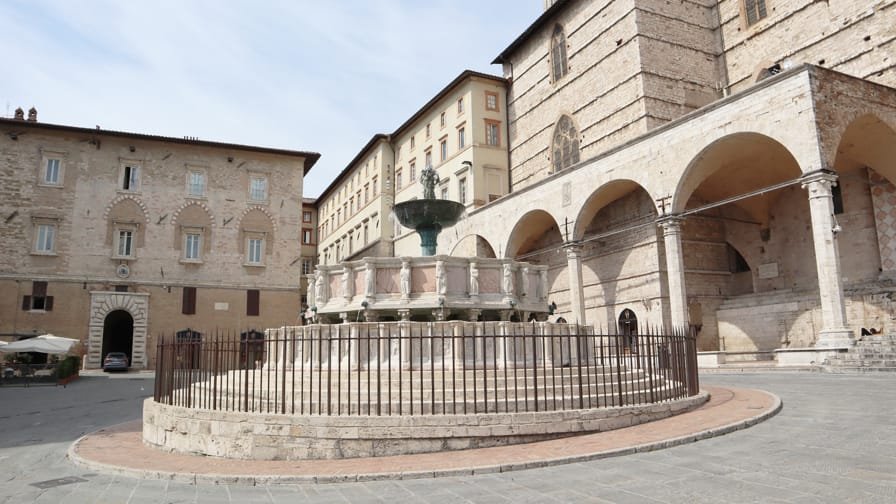
Piazza IV Novembre, located in the very heart of Perugia’s historic center, is the city’s most iconic square and a vibrant symbol of its medieval past. Dominated by the magnificent Fontana Maggiore, a 13th-century masterpiece of Gothic sculpture, the piazza is framed by some of Perugia’s most important monuments, including the Palazzo dei Priori and the Cathedral of San Lorenzo. Its irregular shape reflects the city’s ancient urban fabric, where civic, religious, and social life converged. Over the centuries, this square has hosted markets, gatherings, and celebrations, remaining the true civic stage of Perugia. Today, Piazza IV Novembre continues to serve as a lively meeting place for residents, students, and visitors, offering breath-taking views and a timeless atmosphere. Whether admired for its art, history, or simply as a spot to pause and soak in the rhythm of city life, it stands as Perugia’s cultural and spiritual centre.
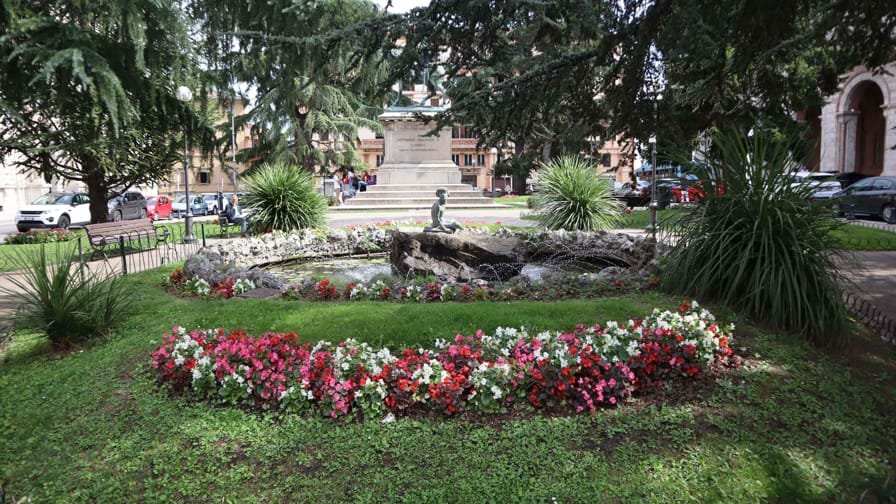
Piazza Italia, situated at the southern edge of Perugia’s historic centre (06121, PG, Italy), is one of the city’s most elegant and scenic squares. Overlooking the sweeping Umbrian valley, it offers breath-taking panoramic views that stretch as far as Assisi and the surrounding hills. Built in the 19th century after the unification of Italy, the piazza has a distinctly modern character compared to Perugia’s medieval heart, reflecting a period of urban renewal. It is framed by grand buildings such as the Palazzo della Provincia and the Hotel Brufani, which add to its stately atmosphere. Piazza Italia is also the starting point of Corso Vannucci, the city’s main promenade, making it a natural gathering place for both locals and visitors. Often animated by cultural events, markets, and public celebrations, the square embodies a harmonious blend of civic life, history, and natural beauty, serving as a gateway to Perugia’s vibrant centre.
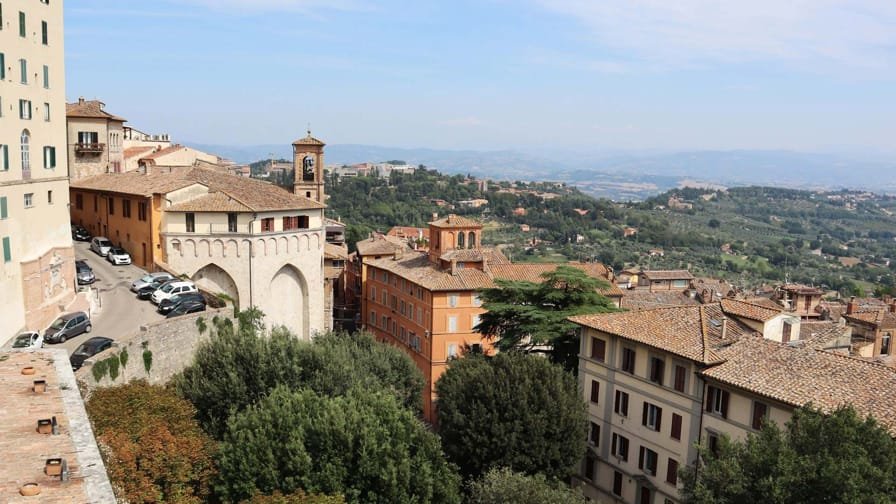
Viale Indipendenza, located in Perugia’s historic center (06121, PG, Italy), is a broad and elegant avenue that combines history, culture, and some of the city’s most stunning views. Stretching between Piazza Italia and Piazza Partigiani, it is lined with noble buildings, hotels, and leafy trees that give it a refined, welcoming atmosphere. The avenue was developed in the late 19th and early 20th centuries, reflecting the city’s modernization while still harmonizing with its medieval character. Along Viale Indipendenza, one finds notable landmarks such as the imposing Hotel Brufani Palace and several historic palazzi. Its panoramic terraces are among the best spots in Perugia to admire sweeping views of the Umbrian valley, especially at sunset. Today, the street serves as both a scenic promenade and a lively urban artery, frequented by locals, students, and tourists alike. Viale Indipendenza stands as a graceful link between Perugia’s past and present.
Photo Gallery of Walk 1 – Piazza Vittorio Veneto to Via della Cupa
Approximately 2.30 km – 1.43 miles
The walk starts in Piazza Vittorio Veneto – Via M. Angeloni – Piazza delle Fonti di Veggio – Via del Bucaccio – Via XX Settembre – Parco della Pescaia – Via XX Settembre – Via Ascanio della Corgna – Via Fiorenzo di Lorenzo – Porta Crucia, Via Eburnea – Via Eburnea – Via degli Apostoli – Via S. Giacomo – Via Annibale Mariotti – Via della Cupa
Photo Gallery of Walk 2 – Via della Cupa to Viale Indipendenza
Approximately 1.01 km – 0.63 miles
The walk starts in Via della Cupa – Piazza Baldassarre Ferri – Via della Stella – Via dei Priori -Corso Vannucci – Via Cesare Fani – Piazza IV Novembre – Corso Pietro Vannucci – Piazza Italia – Giardini Carducci, Piazza Italia – Viale Indipendenza
COPYRIGHT © 2018-2025 ITALY IN PHOTOS - ALL RIGHTS RESERVED
